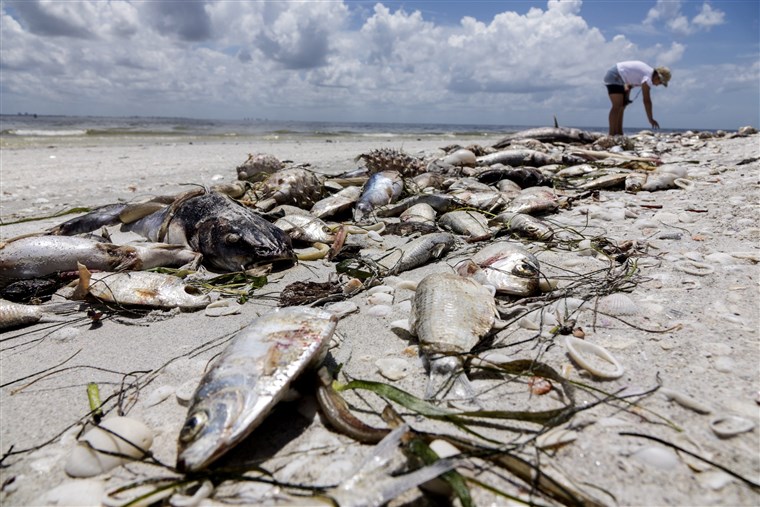
If you’ve been watching the news lately, you’ve probably heard about the devastating red tide ravaging Florida’s southwest coast.
Florida’s red tide of 2018 has turned it’s beaches into marine graveyards. Manatees, dolphins, sea turtles, and fish have died by the hundreds and washed ashore, creating an apocalyptic scene of death and destruction on Florida’s usually pristine beaches.
The photos look like something out of an end-of-the-world movie. But unfortunately, it’s very real.
What is a red tide?
Red tide is a higher-than-normal concentration of algae. A certain amount of algae is normal and healthy in waterways, including the ocean. But an extremely high algae bloom, like in a red tide, is deadly to marine life and harmful even to humans.
It’s called a “red tide” because the algae is a red-brown color, and the concentration of algae is so high it turns the water a spooky rust color.
Red tides can last as little as a couple weeks or as long as a year or more.
Why is a red tide dangerous?
The Florida red tide organism, K. brevis, produces toxins that can affect the central nervous system of fish, sea turtles and other marine animals, which leads to their death.
Not only can a red tide harm aquatic life, it can cause health problems in humans, too. Humans can be sickened by a red ride by breathing in toxins in water vapor, eating shellfish that have grown in a red tide, or by exposing their skin to the water.
What causes a red tide?
Scientists aren’t completely sure what causes red tides, but they have some ideas.
Red Tides tend to happen after hurricanes or heavy rains. Storm water runoff carries large amounts of human and animal waste, agricultural fertilizers, and biological waste into the ocean. This introduces large amounts of bacteria to the ocean, and bacteria is what algae feed on. This extraordinary boost of food may cause the algal population to explode, causing a red tide.
However, Florida’s red tides seem to begin 10-40 miles offshore, away from agricultural runoff, so waste water and nutrients from land may not be what causes Florida’s red tides.
Higher water temperatures from climate change may also be to blame for red tides, as algae reproduces more easily in warmer water.
Florida’s most recent red tide may have been caused by the U.S. Army Corps of Engineers releasing a large amount of water from Lake Okeechobee. When it’s fertilizer-rich water flowed into the ocean, it may have helped fuel the current algal bloom.
Right now, scientists just aren’t sure.
Florida’s red tides are unique in the world
Red tides occur all over the world, but the red tides in Florida are one-of-a-kind. Florida’s red tide is caused by K. brevis, an organism found only in the Gulf of Mexico. Florida’s red tides, however, have been known to travel as far north as Delaware and into the Atlantic Ocean, pushed by the Gulf Stream.
What do I need to do during a red tide?
A red tide is no reason to panic if you live near the beach. There are just a few precautions you should take to make sure you stay safe.
- Don’t eat recreationally harvested shellfish – Shellfish you buy from the store should be fine, but anything you harvest yourself or that came from areas the red tide has affected could be dangerous. You can’t smell or taste the toxins, so play it safe.
- Don’t go in the water – Red tides can cause rashes, burning/itchy eyes, and cough.
- Stay off the beach if you’re prone to asthma or other breathing problems – Inhaling the toxins released by the algae can cause respiratory irritation.
- If you live in an area affected by red tide, close your windows and run the air conditioner to prevent airborne toxins from entering your home.
- If you go to the beach, wear shoes – this will prevent puncture wounds from sharp rocks and shells that may have been tainted with red tide toxins or algae.
Want to know more about the red tide in Florida?
Check out the Florida Fish and Wildlife Conversation Commission’s “Red Tide Current Status” page at http://myfwc.com/redtidestatus.
